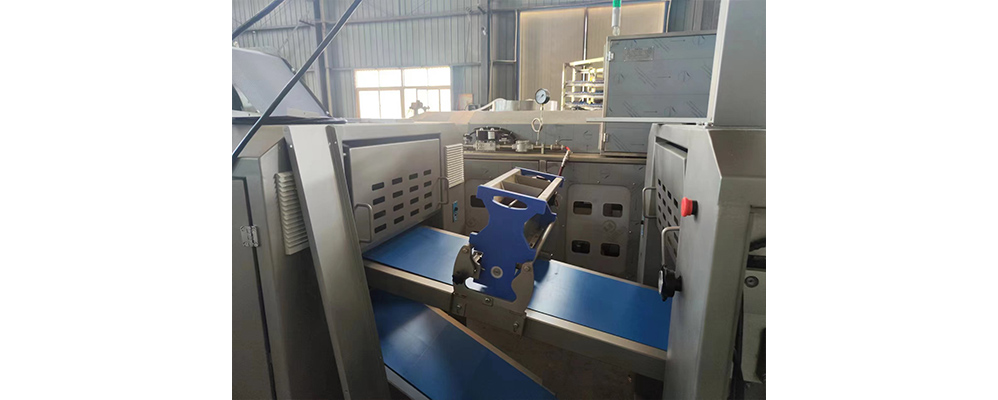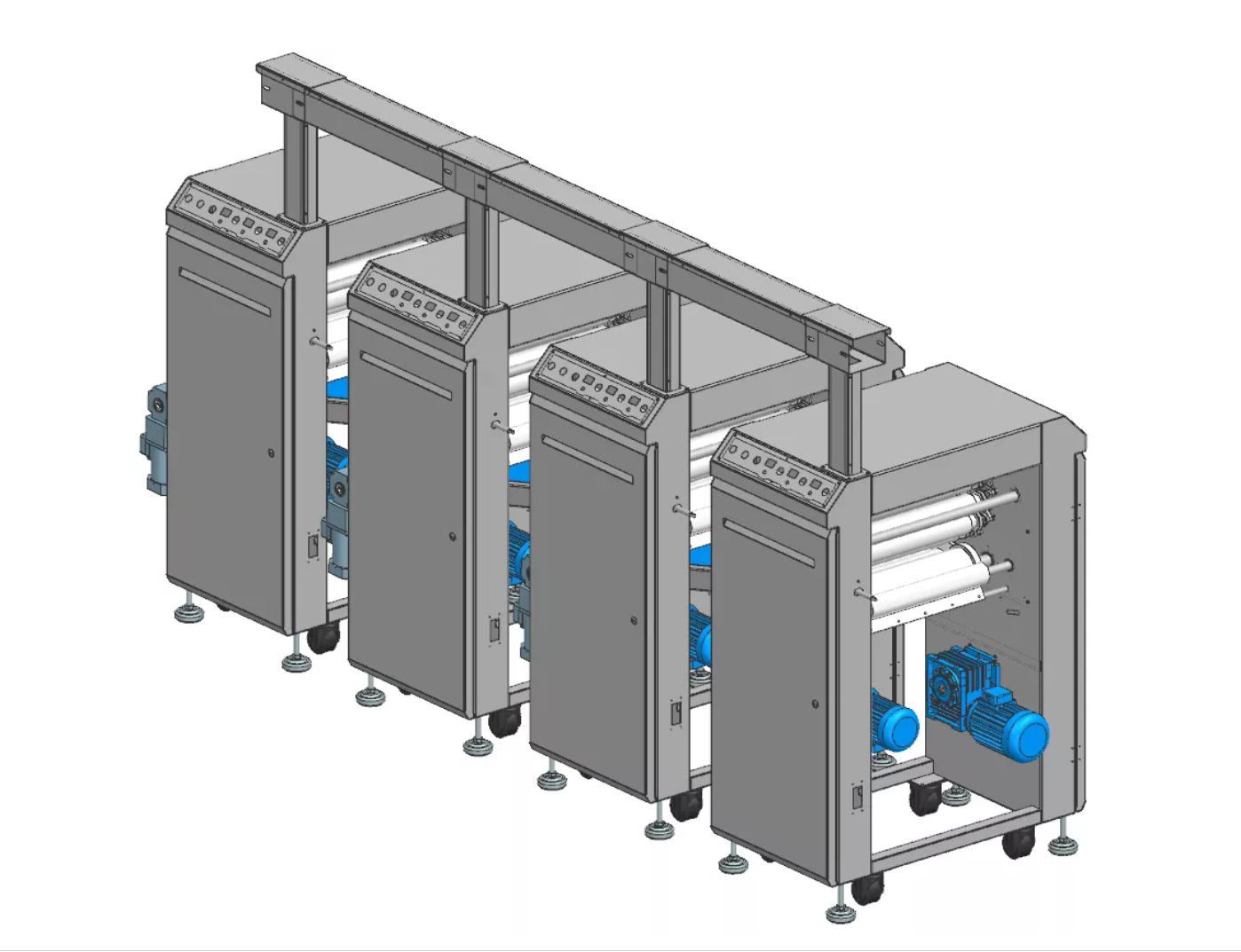Are you struggling with uneven bread dough? Perfect dough texture is essential for high-quality bread. In this article, we'll explore tips for achieving smooth, elastic dough using a bread machine. You'll learn the best techniques for consistent results every time. Get ready to improve your bread-making skills!
What is a Dough Roller Machine and How Does It Work for Bread?
A dough roller machine is designed to flatten and shape dough by passing it through adjustable rollers. It ensures the dough is spread evenly to a consistent thickness, which is essential for producing uniform bread.
Unlike hand rolling, which can result in uneven thickness, a dough roller machine offers precision and speed. Stand mixers are good for kneading but don't handle the rolling process. The dough roller machine simplifies the entire process, saving time and ensuring consistency in every batch.
The machine's primary function in bread making is to create dough with the right texture, ensuring it bakes evenly. By offering uniform thickness, the dough roller machine helps achieve the perfect crumb structure in the final loaf. Its role in bread production is invaluable, providing both uniformity and speed.
Dough roller machines typically have adjustable settings for speed and thickness. These settings allow for precise control, making it easy to tailor dough to different bread recipes and achieve optimal results.

Why is Dough Texture Important for Perfect Bread?
Perfect dough texture is key to making great bread. It refers to how the dough feels and behaves as it's rolled, kneaded, and shaped. The right texture ensures a smooth, elastic dough that can rise well and bake evenly.
Key Qualities of Well-Made Bread Dough
For bread, ideal dough should have three key qualities: elasticity, smoothness, and consistency. Elasticity helps the dough stretch without tearing, while smoothness makes it easier to handle. Consistency ensures that the dough behaves the same way every time, leading to uniform bread.
How the Right Texture Ensures Proper Rise and Crumb Structure
The right dough texture affects how the bread rises. If the dough is too stiff or too soft, it may not rise properly. A dough with the right texture allows air to form bubbles, which gives bread its light, airy crumb. A smooth, elastic dough promotes an even rise, making the final loaf soft and fluffy.
Common Dough Texture Issues in Bread Making
When dough doesn't have the right texture, common issues can arise. Sticky dough can be hard to handle, while dry dough can lead to dense, crumbly bread. Overly dense dough won't rise well and can make bread heavy and tough.
The Importance of Getting the Texture Right for Different Bread Types
Different breads require different dough textures. For example, pizza dough needs a firmer texture to hold its shape, while soft rolls need a more elastic dough to allow for a light rise. Adjusting dough texture based on bread type helps ensure the best result.
Essential Tips for Rolling Bread Dough in a Dough Roller Machine
Use the Right Type of Flour for Bread Dough
The type of flour you use has a big impact on bread dough texture. Bread flour, for example, has more protein than all-purpose flour. This protein is key to gluten formation, which gives the dough its structure and elasticity. All-purpose flour can work, but bread flour is best for a chewier, fluffier loaf. Specialty flours, like whole wheat or rye, offer unique textures, but you may need to adjust your recipe for the right consistency.
Measure Ingredients Accurately for Consistency
Accurate ingredient measurement is crucial for perfect dough texture. Too much flour can make the dough dry, while too little water can cause it to be sticky and hard to roll. Using a kitchen scale is the best way to measure ingredients. If you don't have one, be sure to spoon flour into your measuring cup, then level it off. Understanding ingredient ratios helps ensure that your dough turns out consistently, every time.
Yeast Choice and Its Impact on Dough Texture
Yeast plays a major role in dough texture. Active dry yeast and instant yeast are the most common types used in bread making. Instant yeast is quicker, but both types will give your dough a good rise. Yeast helps create the light, airy structure by fermenting sugars and producing gases. If there's too much yeast, the dough can rise too fast and collapse. On the other hand, inactive yeast won't provide the proper rise, resulting in dense bread.
The Role of Water Temperature in Achieving the Right Dough Texture
Water temperature is critical for activating yeast. Too hot, and you could kill the yeast; too cold, and it won't activate properly. The ideal water temperature for bread dough is between 100°F to 110°F (37°C to 43°C). It's also important to adjust your water temperature based on your environment. In cooler kitchens, warm water may be necessary to keep the dough at the right consistency.
Adjusting the Dough Roller Machine Settings for Perfect Bread Dough
Dough roller machines offer various settings that help customize dough texture. Adjusting the speed and thickness of the rollers is key. For soft, airy breads, you might want to use a slower speed and a thinner setting. For denser dough, like baguettes, a thicker setting and higher speed will work better. Experimenting with these settings will help you achieve the perfect dough texture for different types of bread.

Troubleshooting Common Bread Dough Texture Problems in a Dough Roller Machine
Dough Too Sticky
Sticky dough can be caused by excess moisture, using the wrong flour type, or over-kneading the dough. If the dough is too wet or clings to the roller, it won't roll properly, making the process frustrating.
To fix sticky dough, try adjusting your ingredient ratios. Gradually add more flour until the dough becomes manageable and no longer sticks to your hands or the machine. Additionally, check the dough roller settings and adjust the speed or thickness to create a smoother dough consistency.
Dough Too Dry
Dry dough is often caused by not using enough liquid, improper yeast usage, or inaccurate flour measurements. If the dough is crumbly, stiff, or won't come together properly, this is usually the culprit.
To fix dry dough, slowly add water or liquid to the dough while mixing. Be sure to add it in small amounts so you don't end up with too wet a dough. Also, check the flour quantities to ensure they're accurate and that the yeast is active and properly measured. Adjusting these factors will help bring the dough back to the right texture.
Dough Not Rolling Properly
If your bread dough is not rolling properly, it could be due to uneven consistency, lack of moisture, or incorrect machine settings. When the dough isn't right, it may either tear or get stuck in the rollers.
To ensure smooth rolling, first check the dough's consistency and adjust accordingly. If it's too thick or dry, try adding a bit more liquid. If it's too soft, add more flour to thicken it up. Adjust the dough roller machine settings, including speed and thickness, to match the dough's needs. Ensuring the dough has the right moisture content will also help it pass through the rollers more easily, preventing problems with texture.
Advanced Tips for Perfect Bread Dough in a Dough Roller Machine
How to Add Ingredients Without Affecting Dough Texture
When adding seeds, nuts, or other ingredients to bread dough, timing is crucial. Adding them too early can affect the dough's texture, making it uneven. The best approach is to add these ingredients during the last few minutes of the dough cycle. This way, they mix in without disrupting the dough's consistency.
To prevent add-ins from weighing down the dough, you can lightly flour them before adding. This helps them incorporate smoothly and ensures the dough maintains its structure.
How to Use Bread Dough for Different Types of Baked Goods
Using a dough roller machine for different baked goods requires adjustments to dough consistency. For pizza dough, the texture needs to be firmer and less elastic than bread dough. The dough roller machine settings should be adjusted to roll pizza dough thicker, to create a sturdy base that won't tear easily.
For rolls, baguettes, or other specialty loaves, you'll need a softer, more elastic dough. Adjust the roller machine settings to roll the dough thinner and lighter. These small tweaks will help customize dough texture for each specific type of bread.
Conclusion
To achieve perfect bread dough texture in a dough roller machine, use the right flour, measure ingredients accurately, and adjust settings for different breads. Experiment with various types of dough and techniques to find what works best for you. Troubleshoot common dough problems by adjusting moisture, ingredients, and machine settings for optimal results every time.
JINKEJXIE has years of experience in production of Dough Machine. Therefore, If you have any questions about Dough Roller Machine, feel free to contact us anytime with your inguiries.
FAQ
Q: Can I Use a Dough Roller Machine for Other Types of Dough?
A: Yes, dough roller machines can handle various types of dough, such as pizza, pastry, and even cookie dough. You may need to adjust the roller settings for different dough consistencies to get the desired result.
Q: How Do I Know If My Dough is Ready for Rolling?
A: Your dough is ready when it's smooth, elastic, and no longer sticky. It should hold together without tearing and pass through the rollers without difficulty. If it's too wet or sticky, add a little flour; if it's too dry, add water.
Q: What Should I Do If My Dough Gets Stuck in the Machine?
A: If the dough gets stuck, it's often because it's too sticky or not sufficiently floured. Check the dough's consistency and adjust the moisture or flour content. Make sure the rollers are clean and properly adjusted for smooth operation.
Q: Can I Adjust the Thickness of Dough in the Roller Machine?
A: Yes, most dough roller machines allow you to adjust the thickness of the dough. This is done by altering the roller settings. Adjust according to the type of bread or baked goods you are making for best results.





















